- Home
- P. D. James
The Maul and the Pear Tree
The Maul and the Pear Tree Read online
P. D. JAMES AND
T. A. CRITCHLEY
* * *
The Maul and the Pear Tree
THE RATCLIFFE HIGHWAY MURDERS 1811
This new edition
dedicated to the memory
of T. A. Critchley
Illustrations
1 Sketch map of the Ratcliffe Highway circa 1811 (Benton Hughes)
2 Hand-bill issued by the parish of St George’s-in-the-East (Public Record Office)
3 The funeral of the Marrs (Tower Hamlets Library)
4 Marr’s shop and the Maul, by J. Girtin (Guildhall Library)
5 Escape of John Turner from the King’s Arms (Fairburn’s Account)
6 A correct likeness of John Williams
7 The body of John Williams outside Marr’s shop (GLC Print Collection)
8 The procession to interment of John Williams
9 View of the body of John Williams at Cannon Street Turnpike (Fairburn’s Account)
10 Accounts of rewards paid (Public Record Office)
‘Mr Williams made his début on the stage of Ratcliffe Highway, and executed those unparalleled murders which have procured for him such a brilliant and undying reputation. On which murders, by the way, I must observe that in one respect they have had an ill effect, by making the connoisseur in murder very fastidious in his taste, and dissatisfied by anything that had since been done in that line. All other murders look pale by the deep crimson of his.’
Thomas De Quincey,
On the Knocking at the Gate in Macbeth
Contents
Title Page
Dedication
List of illustrations
Epigraph
Map
Introduction by P. D. James
Foreword
1 Death of a Linen Draper
2 Person or Persons Unknown
3 The Maul
4 Twelfth Night
5 The Pear Tree
6 Feast of the Nativity
7 Verdict from Shadwell
8 A Grave at the Crossroads
9 The French Knife
10 A Case for Parliament
11 The Eighth Victim?
Epilogue
Bibliography
People in the case
About P. D. James and T. A. Critchley
Copyright
1 Sketch map of the Ratcliffe Highway circa 1811
Introduction
by P. D. James
This book had its genesis in 1969 when I first read T. A. Critchley’s A History of Police in England and Wales, 900–1966, in which he gives a brief account of the 1811 Ratcliffe Highway murders on the borders of Wapping. The brutal murder of two families provoked an unprecedented nationwide panic and Tom Critchley deals in his book with the demand for the reform of the police to which this gave rise, as inexperienced magistrates with their pathetically inadequate and ill-equipped forces grappled with the mystery against a background of mounting hysteria and public criticism. By chance I had myself recently read a contemporary account of the murders which left me very doubtful about the guilt of the seaman, John Williams, who was eventually arrested. We decided to undertake our own investigation from such records as we could find, with a view to writing an account in collaboration. The Maul and the Pear Tree, originally published by Constable in 1971, was the result. It was for me an enthralling, exciting and deeply satisfying collaboration. Unhappily my co-author has since died, but this new edition, which he would have been delighted to see, is dedicated to him.
There is surely no part of London which has seen greater changes since the book was first published than has riverside Wapping. If the ghosts of those pathetic victims and of Mrs Vermilloe’s seafaring lodgers could revisit their old haunts, little more than an occasional public house and the elegant octagonal lantern of Hawksmoor’s St George’s-in-the-East would remain to make them feel at home. It would surely seem to them that the Highway, with its gleaming tarmac and unending traffic, had replaced the Thames as London’s main thoroughfare, as busy and perhaps as dangerous as the river they knew. What, I wonder, would they make of St Katherine’s Dock yachting marina and the concrete bastions of riverside hotels, or the converted warehouses, once citadels of the trade which supported their precarious livelihoods, but which are now the coveted apartments of the rich? The hovels and the narrow streets with their teeming life have vanished and only the strong-flowing Thames remains the same.
T. E. Critchley and I, drawing largely on contemporary records, have given our solution to the mystery, but a mystery it still remains. The Ratcliffe Highway murders, previously thought of as simple acts of extreme barbarism, are among the most interesting and extraordinary in the English criminal calendar.
Foreword
During the dark nights of December 1811 in the vicinity of Ratcliffe Highway, in the East End of London, two households, comprising seven people, were brutally clubbed to death within a period of twelve days. From the first the murders, in their barbarity and ruthlessness, powerfully gripped the public imagination. Never before, even at the time of the Gordon Riots, when London was brought to the edge of anarchy, had there been such a national outcry against the traditional means of keeping the peace, or a more vigorous and persistent demand for reform. The Government advertised the highest reward ever offered for information that might lead to the discovery of the murderers; for three weeks The Times gave the crimes pride of place over almost every other news; in De Quincey’s mind they inspired one of the great essays in the English language, On Murder considered as one of the Fine Arts, with its immortal version of the butchery of the Marrs and Williamsons added, years afterwards, as a Postscript. For decades legends of the brutalities continued to circulate until, three-quarters of a century later, Jack the Ripper set to work on a neighbouring East End stage to steal the limelight from his only competitor for the sanguinary laurels of the British criminal calendar.
Horror and mystery, as well as a similarly squalid location, were common to the authors of both these outstanding crimes, but in one respect the circumstances of 1887 were very different from those of 1811. Some 14,000 Metropolitan policemen, aided by hundreds of detectives, were available to hunt the Ripper; and although they never caught him, the police were at least able to spread reassurance to a terrified populace. But in 1811 Britain had no police force, and panic was unbridled. One of the most fascinating aspects of the study of these crimes is the insight they afford into the way in which the moribund parish system, aided by the innovation of ‘police magistrates’, rose to the challenge of a major murder investigation – and apparently, despite the public clamour, met with ultimate success. But when we ranged beyond the printed accounts of the murders it became obvious that the case was a great deal more involved than anyone but a handful of men then living has ever appreciated. From unpublished sources and newspaper reports we reconstructed the actual events; and as the story developed it became clear that the system of 1811 had done no more than pronounce a confident, convenient and ghoulish judgement on a corpse, while leaving the core of the Ratcliffe Highway murders wrapped in continuing mystery.
Of all the published accounts of the murders we have been able to trace only two that have any value. The most important comprises three contemporary (and now rare) pamphlets published at sixpence each by John Fairburn. They are undated, but from internal evidence it is clear that they were printed in December 1811 or early 1812. The pamphlets narrate the circumstances of the murders and include a useful amount of evidence taken before the magistrates and, at three successive inquests, by the Coroner. The other published source of value is Sir Leon Radzinowicz’s History of the English Criminal Law, vol. 8, where the outline of the story is briefly told
, but without the supporting evidence; Radzinowicz, however, makes some use of the Home Office papers, obviously not available to Fairburn. Most of the remaining accounts appear to derive either from Fairburn or from De Quincey’s fanciful essay; consequently they have not been useful for our purpose. However, because of the enormity of the crimes the contemporary newspaper reports of the proceedings are remarkably full, and we have relied particularly on those in The Times, the London Chronicle, the Morning Post and the Morning Chronicle, supplemented by the Courier, The Examiner, and the Gentleman’s Magazine.
Our other principal source has been the Home Office papers (Domestic Series) now in the Public Record Office. Before the Metropolitan Police were set up, the Middlesex magistrates maintained a regular correspondence with the Home Secretary on criminal matters, and the bundles of papers for December 1811 and the early part of 1812 contain a wealth of material on the Ratcliffe Highway murders that has never before been assembled or, with the exception of a few documents referred to by Radzinowicz, published.
Two sources of material, either of which might contain a final clue to the mystery, have eluded our searches. The most serious loss is that of the original depositions of evidence taken before the Shadwell magistrates. They were sent to the Home Office by order of the Home Secretary on 10 January 1812, and returned by him to the Clerk to the Shadwell bench on 7 February. We have not been able to trace them since. The magistrates themselves told the Home Secretary in December 1811 that the newspaper reports of the hearings were ‘pretty accurately given’, so the loss may not be great. Nevertheless it seems likely that small additional details contained in the original transcripts, set against what we now know, might confirm what must otherwise be tentative conclusions about the true authors of the crimes. The other lost source seems once to have lain among the records of the East India Company. We believe that particulars of a mutiny that broke out on board the East Indiaman the Roxburgh Castle early in 1811 would shed light on the events that occurred in Ratcliffe Highway a few months afterwards; and we think that the circumstances of that mutiny, could they now be traced, would bear out our own hypothesis.
We are grateful to many people who have helped us to collect material for this book, and in particular it is a pleasure to acknowledge the always courteous, and often enthusiastic, assistance we have received from the following: the staffs of the Public Record Office, the British Museum, the London Museum, the Archives Department of the Greater London Council and the Library and Print Room of the Guildhall; Mr Douglas Matthews, Deputy Librarian of the London Library; the Librarians of the Home Office, New Scotland Yard, the London Borough of Tower Hamlets and the Port of London Authority; the Curator of the Museum of the River Thames Division of the Metropolitan Police; the Rev. A. M. Solomon, the present Rector of St George’s-in-the-East, who kindly produced for us early parish documents bearing on the case; and Mr Benton Hughes, to whom we owe a particular debt of gratitude for his work in preparing the illustrated street plan reproduced on pages x–xi. The plan is based on a map engraved by Richard Horwood in 1807; the drawings of Marr’s shop, the King’s Arms and St George’s church are from contemporary prints; that of the Pear Tree is imaginary.
For the illustrations we thank the following: the print of the funeral procession of the Marrs by courtesy of the London Borough of Tower Hamlets Library Committee; for permission to reproduce the handbill issued by the Parish of St George’s and the account of rewards paid, we are indebted to the Keeper of the Public Record Office; the drawing of Marr’s shop together with the Maul is from the Guildhall Library, and that of John Williams’s body on the cart outside Marr’s shop from the Greater London Council Print Collection.
Finally it is a pleasure to record our thanks to Professor Keith Simpson, MA, MD, Professor of forensic medicine at Guy’s Hospital, London, for kindly agreeing to read the medical evidence given at the inquest, and for answering our questions arising out of it.
T.A.C.
P.D.J.
April 1971
ONE
Death of a Linen Draper
A little before midnight on the last night of his life Timothy Marr, a linen draper of Ratcliffe Highway, set about tidying up the shop, helped by the shop-boy, James Gowen. Lengths of cloth had to be folded and stacked away, rough worsted, dyed linen, canvas for seamen’s trousers and serge for their jackets, cheap rolls of printed cotton at fourpence a yard, and bales of silk and muslin laid in to attract the wealthier customers from Wellclose Square and Spitalfields. It was Saturday, 7 December 1811; and Saturday was the busiest day of the week. The shop opened at eight o’clock in the morning and remained open until ten o’clock or eleven o’clock at night. The clearing up would take the pair of them into the early hours of Sunday.
Marr was twenty-four years old. He had been a seafaring man, employed by the East India Company, and had sailed on his last voyage in the Dover Castle three years earlier, in 1808. It was also Marr’s most prosperous voyage. He did not sail before the mast with the crew, but was engaged by the captain as his personal servant. He seems to have been an agreeable young man, conscientious, anxious to please and ambitious to better himself. During the long return voyage this ambition took shape. He knew precisely what he wanted. There was a girl waiting for him at home. Captain Richardson had held out the promise of help and patronage if Marr continued to serve him well. If he came safely home he would take his discharge, marry his Celia, and open a little shop. Life on shore might be difficult and uncertain, but at least it would be free from danger; and, if he worked hard, it would hold the sure promise of security and fortune. When the Dover Castle docked at Wapping Marr was signed off with enough money to start him in a modest way of business. He married, and in April 1811 the young couple found what they were looking for. Property in the riverside parishes of East London was cheap, and Marr understood the ways of sailors. He took a shop at 29 Ratcliffe Highway, in the parish of St George’s-in-the-East, on the fringes of Wapping and Shadwell.
For two centuries the Highway had had an evil reputation. It was the chief of three main roads which ran out of London to the east, following a ridge of firm ground above Wapping Marsh. There had been a road along this bluff since the days of the Romans, and the point where the strand of reddish gravel came closest to the water’s edge (‘red cliff’) had been a harbour from earliest times. But already, by 1598, the year when Stowe published his Survey of London, Ratcliffe Highway had become a ‘filthy strait passage, with alleys of small tenements, inhabited by sailors’ victuallers’. The degeneration had come about in Stowe’s own life-time. Forty years earlier the Highway had run between ‘fayre hedges, long rows of elme, and other trees’ to the hamlet of ‘Limehurst, or Lime host, corruptly called Lime house’. Wapping and all the land bordering the river had been green fields and orchards, much as the Romans had established it, with ‘never a house standing within these forty years’.
There was a particular reason why nobody wanted to build at Wapping, despite the growth of shipping in the Pool of London in Elizabethan times. The hamlet ‘was the usual place of execution for hanging of pirates and sea rovers, at the low water mark, and there to remain, till three tides had overflowed them’. For years superstition and dread had held back the builders, and it was not until the gallows were shifted a little farther down river that the first slums came. Then they spread rapidly over the marshy ground, reaching out to the gallows and beyond, to Shadwell, Ratcliffe, Limehouse and Poplar. Life in these eighteenth-century hovels was savage, and the rattle of a dead man’s chains when the waves surged in on a rising tide was just a reminder of its realities. So too was the twisted street plan of Wapping. The piers and causeways and flights of tide-washed stone steps that led down to the river – Pelican Stairs, King James’s Stairs, Wapping New Stairs – still revealed the skeleton of an ancient maritime village, but it was rapidly disappearing. Dr Johnson witnessed something of the early transition. ‘He talked today,’ Boswell recorded in March 1783, ‘a good
deal of the wonderful extent and variety of London, and observed that men of curious enquiry might see in it such modes of life as very few could ever imagine. He in particular recommended us to explore Wapping.’
The whole district was bounded to the south by London’s dark blood stream, the Thames, a wide, busy thoroughfare, alive with shipping.1 There were the great vessels of the East India Company, bulky and formidable as men-of-war, bearing cargoes of tea, drugs, muslin, calicos, spices, and indigo; West Indiamen bringing sugar, rum, coffee, cocoa and tobacco from the Americas; colliers down from Newcastle; whalers from Greenland; coastal vessels; packets; brigs; lighters; barges; ferries and dinghies. The parishioners of Wapping lived their lives against a constant accompaniment of river sounds; the sighing of the wind in sail or mast, water slopping heavily against the wharves, the raucous shouts of bargees and ferrymen. The rich summer smell of the Thames, its sea winds and autumn mists, were part of the air they breathed. Even the shape of the waterfront was created by its manifold associations with the river, and the names of many of the streets expressed their function. Old Gravel Lane brought sand for ballast from the pits of Kingsland to the wharves of Wapping, while Cable Street was the home of rope makers who twisted their cables in the fields through which it ran.
It was from the bustling trade of the river that nearly all the inhabitants, rich and poor alike, drew their life. There were the stevedores, or lumpers, who humped the cargoes from hold to lighter; the watermen, who worked the lighters and other craft which provisioned the vessels as they rode at anchor; the suppliers of rope and tackle; ships’ bakers; marine store dealers; instrument makers; boat builders; laundresses who lived by taking in the sailors’ washing; carpenters to repair the ships; rat catchers to rid them of vermin; lodging house and brothel keepers; pawnbrokers; publicans and others who made it their business to relieve the returning sailors as speedily and completely as possible of their accumulated pay. All, in their different ways, served the needs of the ships and seamen; and it was the sailors, a swaggering, disreputable aristocracy, coming and going with the tides, who lorded it over all. They lodged in cheap houses by the river, sleeping on straw mattresses four or five to a room, their sea-chests stowed between. After months at sea under harsh discipline men came home rich, with thirty or forty pounds in their pockets, and spent it fast – a cosmopolitan breed, thugs as well as gentlemen in the making, one-eyed, one-legged, ex-mutineers, heroes, pirates, Empire builders homing to the greatest city on earth. There was endless brawling between the English and foreign seamen. In October 1811 the Home Secretary wrote to the local magistrates warning them to stop the fighting before someone was killed. Soon afterwards, as if to emphasise this warning, a Portuguese was stabbed to death.

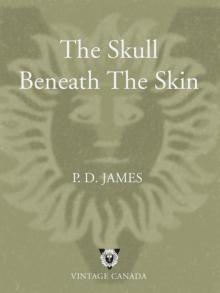 The Skull Beneath the Skin
The Skull Beneath the Skin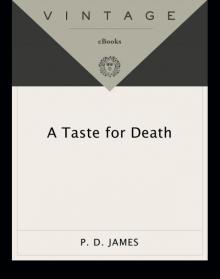 A Taste for Death
A Taste for Death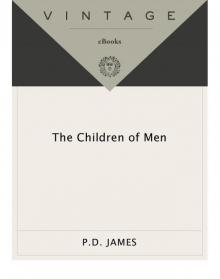 The Children of Men
The Children of Men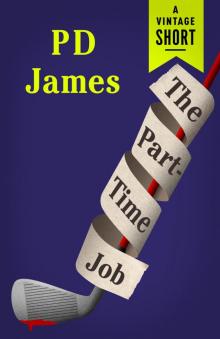 The Part-Time Job
The Part-Time Job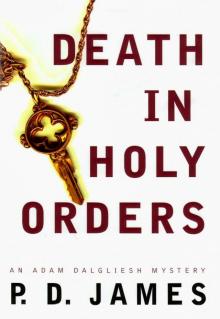 Death in Holy Orders
Death in Holy Orders The Victim
The Victim Shroud for a Nightingale
Shroud for a Nightingale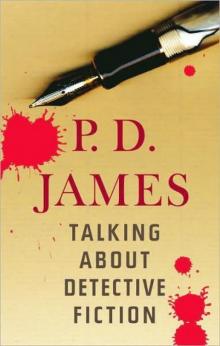 Talking about Detective Fiction
Talking about Detective Fiction Sleep No More
Sleep No More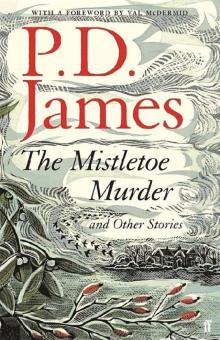 The Mistletoe Murder and Other Stories
The Mistletoe Murder and Other Stories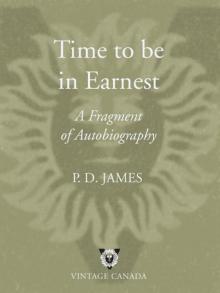 Time to Be in Earnest
Time to Be in Earnest Original Sin
Original Sin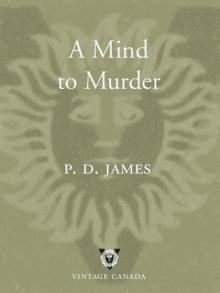 A Mind to Murder
A Mind to Murder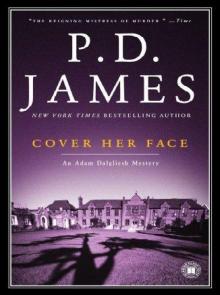 Cover Her Face
Cover Her Face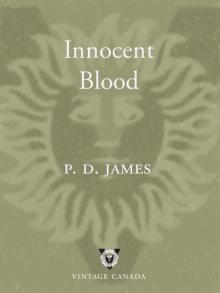 Innocent Blood
Innocent Blood Devices and Desires
Devices and Desires Sleep No More: Six Murderous Tales
Sleep No More: Six Murderous Tales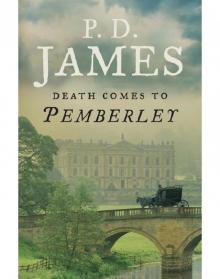 Death Comes to Pemberley
Death Comes to Pemberley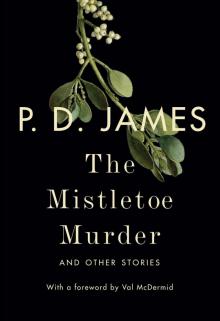 The Mistletoe Murder
The Mistletoe Murder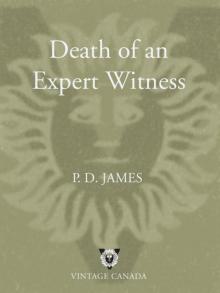 Death of an Expert Witness
Death of an Expert Witness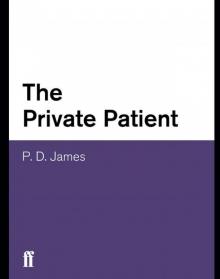 The Private Patient
The Private Patient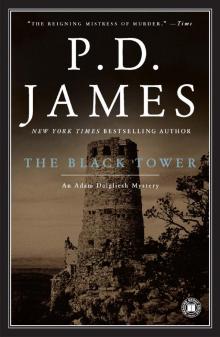 The Black Tower
The Black Tower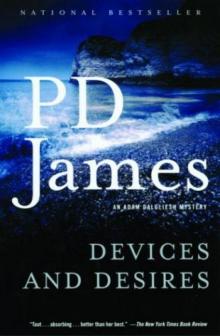 Devices & Desires - Dalgleish 08
Devices & Desires - Dalgleish 08 Unnatural Causes
Unnatural Causes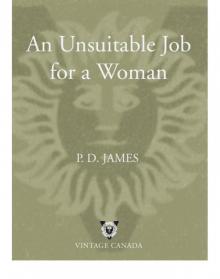 An Unsuitable Job for a Woman
An Unsuitable Job for a Woman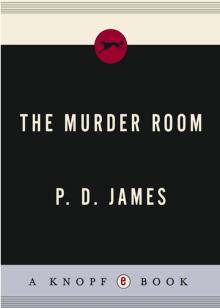 The Murder Room
The Murder Room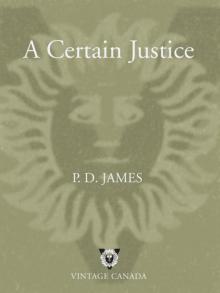 A Certain Justice
A Certain Justice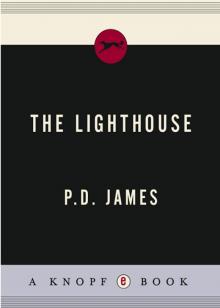 The Lighthouse
The Lighthouse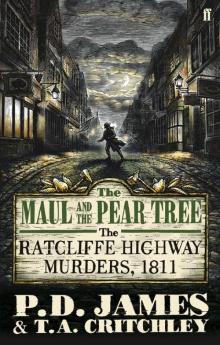 The Maul and the Pear Tree
The Maul and the Pear Tree